The tropical parula - (El Parula Pitiayumí)
Setophaga pitiayumi
Family/familia: PARULIDAE
Common names/Nombres vulgares: Almita. Amarillito. Arañero. Bosterito.
(ENG/ESP)
Hello y'all! It's had a long time since I've been here and I really wanted to post, but I didn't have the resources to publish, so I'm temporarily finding a way to do it.
¡Hola a todos! Hace tiempo no paso por aquí y tenía muchas ganas, pero sin explayarme demasiado no tenía el medio para publicarlo, temporalmente me estoy apañando.
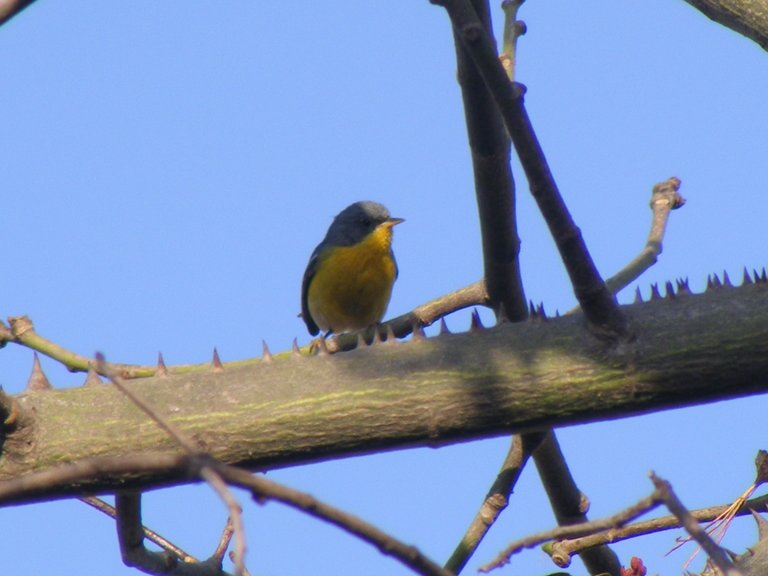
(ENG) Anyway, during this season of intense heat of the South American continent, this cute and adorable star began to be visible. It's hard to see it, until two years ago I didn't even know it existed, and this week I saw up to three together.
I don't know how true it is that they are present all year round in Argentina, I usually see them around the same season once a year. But it could also be a matter of sector.
(ESP) Como sea, durante esta temporada de intenso calor del continente sudamericano, este simpático y adorable ser comenzó a ser visible. Es difícil verlo, hasta hace dos años ni sabía que existía, y esta semana llegué a ver hasta tres juntos.
No sé qué tan ciertos sea que en Argentina estén todo el año, yo suelo verlos por la misma estación una vez al año. Pero también puede ser una cuestión de sector.
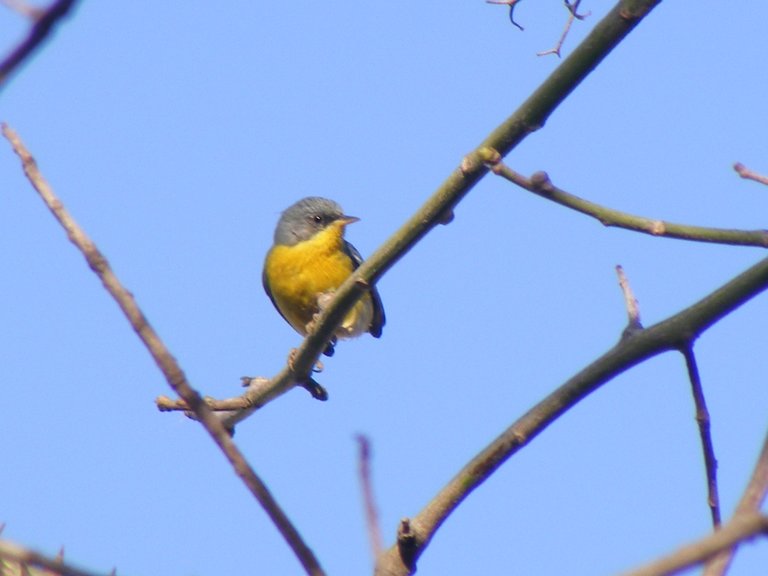
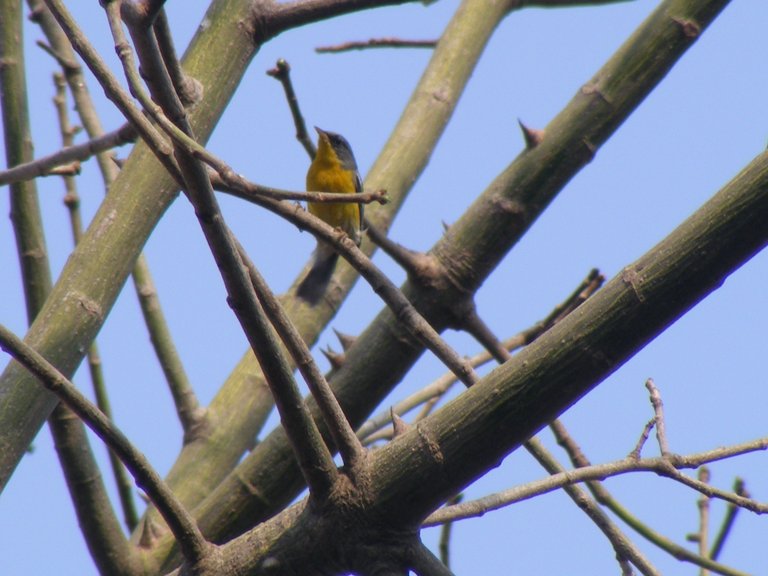
DESCRIPTION/DESCRIPCIÓN:
Length: 10 cm. Upper half of bill bluish, lower half yellow. Yellow legs. Iris dark brown./Largo: 10 cm. Mitad superior del pico azulado, el inferior es amarilla. Patas amarillas. Iris pardo oscuro.
(ENG) Dorsal bluish gray with olive back. Throat and chest yellow. Abdomen yellow. Wings blackish with outer wattles edged with gray. Two white bands on the wing coverts. Tail blackish with blue on the outer rudders.
(ESP) Dorsal gris azulado con la espalda olivácea. Garganta y pecho amarillas. Abdomen amarillo. Alas negruzcas con las barbas externas ribeteadas de gris. Dos bandas blancas en las cubiertas alares. Cola negruzca con azul en las timoneras externas.
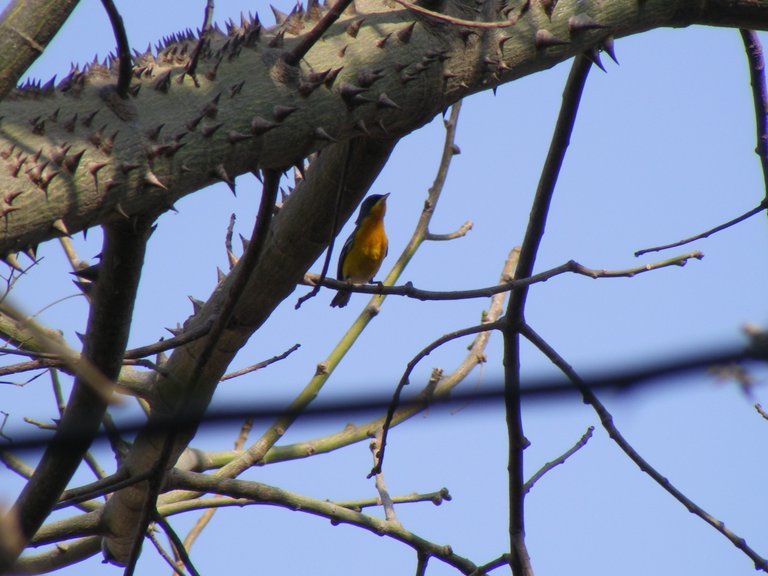
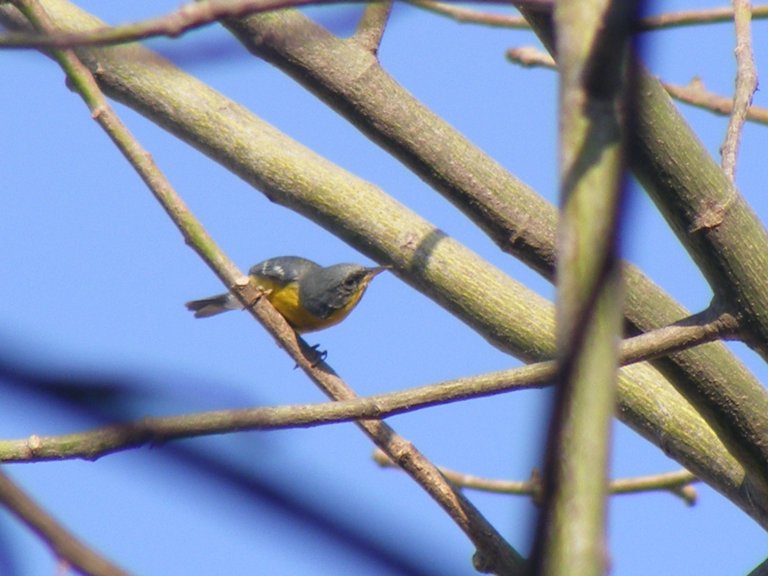
CONDUCT /COMPORTAMIENTO:
(ENG) I see it alone, but recently I was able to see three together, probably due to the reproduction stage. It looks very restless, landing for a few seconds on high branches and then jumping along.
The singing is a succession of whistles. The first few times I could not recognize the type of sound it emits.
(ESP) Lo veo muy solitario, aunque hace poco logré ver tres juntos, seguramente por etapa de apareamiento. Se ve muy inquieto, posa unos segundos en ramas altas y va saltando.
El canto es una sucesión de silbos. Las primeras veces no lograba reconocer el tipo de sonido que emite.
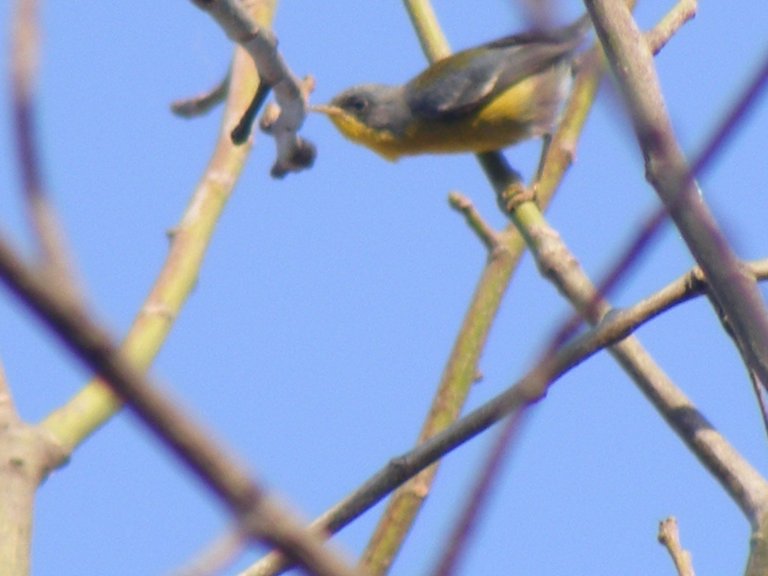
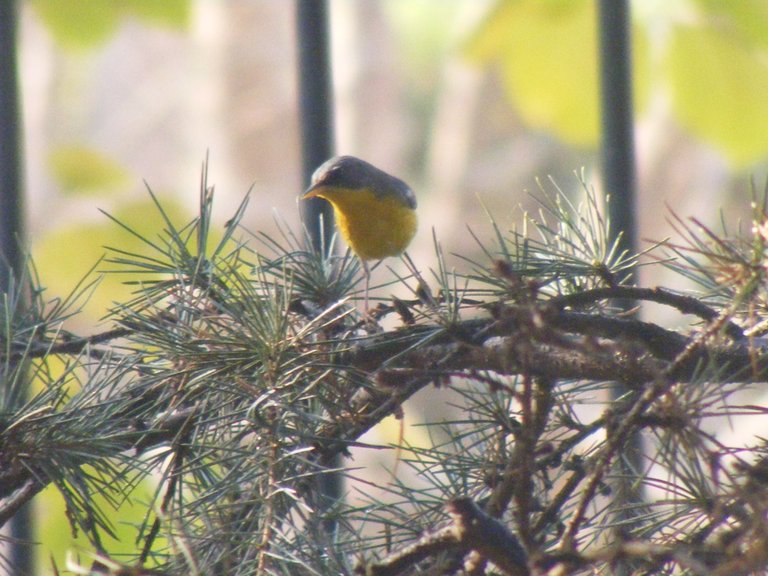

I thought when you mention resources to publish has something to do with Hive which in that case, I can help. But after I check your rc is fine and you can still make comments up to 83. your shots are pretty clear for bird that is perching on the tree!hey @orikkot are you running out of resources to publish? or is it something else?
Oh, no! Everything is fine here. The resource thing was because of a problem with my computer and I was several months without a comfortable workspace because of that. Thank you very much for reaching out for help.
Tiny birds are hardest to capture in photography, normally fast between branches on trees. Lovely to learn about this little one, now you know what you looking for and looking at, great researching information added.
Thank you, it's amazing how much attention you can give to this and get to know species, and still pass many others by because of their size or speed. Knowledge has no limits.
Qué lindo visitante! Muchas gracias por compartir de este lindo compañero.
Bueno saber que se arreglo aquello que no te hacia fácil publicar y que vuelves por aquí. Yo también tuve mi 'desaparición' y por aquí ando de vuelta.
Gracias a ti! Y qué bien que aquí te encuentres de nuevo, un saludo muy grande.
Congratulations @orikkot! You have completed the following achievement on the Hive blockchain And have been rewarded with New badge(s)
Your next target is to reach 1750 upvotes.
You can view your badges on your board and compare yourself to others in the Ranking
If you no longer want to receive notifications, reply to this comment with the word
STOPCheck out our last posts:
Support the HiveBuzz project. Vote for our proposal!
Source of potential text plagiarism
Plagiarism is the copying & pasting of others' work without giving credit to the original author or artist. Plagiarized posts are considered fraud.
Guide: Why and How People Abuse and Plagiarise
Fraud is discouraged by the community and may result in the account being Blacklisted.
If you believe this comment is in error, please contact us in #appeals in Discord.
There is an error. At the end of every post of birds that I do, it says "All images from my work. Scientific name and data extracted from the application "Aves Argentinas" approved by the National Ministry."
Our source is correct. The same text is in that source.
If copied from somewhere else, it is also plagiarism.
The source that you provided is generic and ambiguous as no one is able to verify it unless they install that app.
Besides, owning the app does not make you the author of the text and gives you the right to monetise it.
Even if you provide the source of the text, it simply makes it a copypasta of text since you did not any significant, original writing in the article.
I will do a general check of everything as I usually do to avoid this kind of errors, anyway I take responsibility since you cannot have access to such application, so I understand that checking it is debatable. Even having to change data that were wrongly described, and counting on the fact that it was indeed the correct species. Anyway I appreciate the warning and attention.